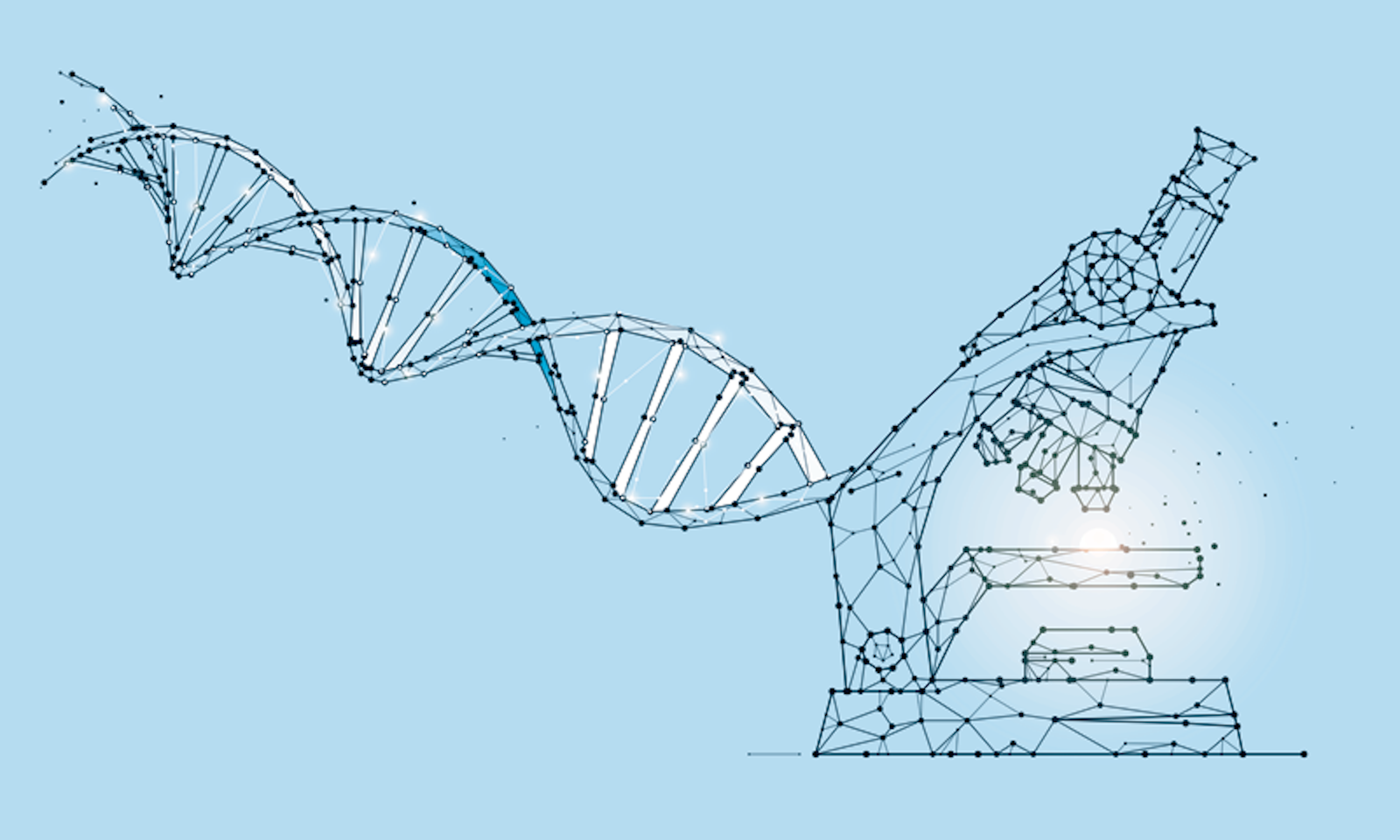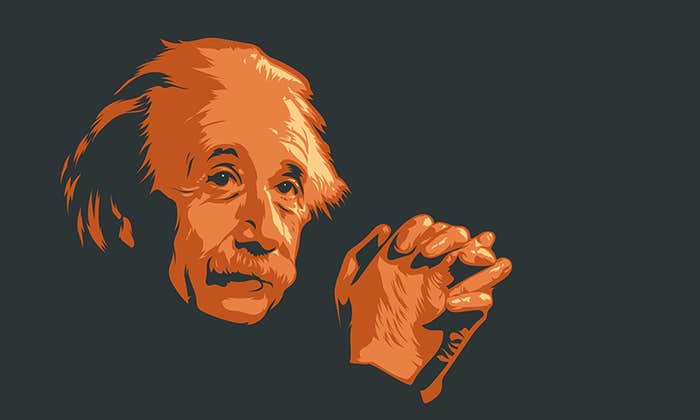It might surprise many people to discover that “beauty” is a word more likely to be spoken today by scientists than by artists. There is almost a sense among contemporary artists and art theorists that the word is unseemly, perhaps even untrustworthy. Scientists, meanwhile, wax lyrical about “beautiful theories”—and beautiful experiments, too. Many claim that this aesthetic reaction is no different to that elicited by art, but it is hard to pin down exactly what it consists of or how it is evoked.
Some scientists associate beauty with symmetry—a feature central to modern physics—but they would struggle in vain to reconcile this idea with aesthetic theories in art. It is challenged, for example, by Immanuel Kant’s claim that “All stiff regularity (such as approximates to mathematical regularity) has something in it repugnant to taste”: we quickly weary of its simplicity. And while some scientists assert that their notion of beauty is timeless and universal, few would claim the same for art.
Some philosophers have argued that “beauty” in science merely stands as a proxy for truth: what is true is then necessarily beautiful. If that is so, such allegedly aesthetic judgments seem a little shallow, and also perilous: we might be tempted to place undue trust in an idea simply because we deem it beautiful.
Some scientists have, however, defended that position. The British physicist Paul Dirac, for example, claimed that it is more important that a theory be beautiful than that it conform with experiment, while Einstein stated that “the only physical theories that we are willing to accept are the beautiful ones.” Others are skeptical that perceptions of beauty are any guide to validity: the zoologist Thomas Henry Huxley said that the “great tragedy of science” is “the slaying of a beautiful hypothesis by an ugly fact.”
We might be tempted to place undue trust in an idea simply because we deem it beautiful.
One argument for why beauty is a valid descriptor in supposedly objective science is that the aesthetic response in scientists seems to involve the same neural pathways as those stimulated by reactions to art. But this doesn’t prove as much as it seems. After all, the same reward circuits of the brain are activated by sex, food, and music—but this hardly implies that they are all essentially the same activity or that one may substitute for the other. There is no evidence that our brains possess some kind of innate neural “beauty circuit.”
In contrast to notions of “beautiful theories” (an assessment commonly applied, for example, to Einstein’s theory of general relativity), it’s less obvious that beauty pronounces at all on the outcome of an experiment. Rather, that tends to be a judgment applied before the outcome is known, and is made more on the grounds of the design and logic embodied in the procedure. As French physicist and philosopher of science Pierre Duhem said, experiments may be seen as embodied hypotheses—and there’s an attraction to an experiment that performs the translation efficiently and unambiguously, as, for example, in Ernest Rutherford’s study of the alpha particle. All the same, there’s likely to be some post-hoc justification in those experiments commonly designated as beautiful. There are probably many beautifully planned and executed experiments that have been forgotten because they didn’t work, or not well enough, or not in a way that could be easily interpreted.

With that proviso, the beauty awarded to an experiment lies more in its execution than in its outcome. It has something in common with the (expert) appreciation of a game of chess, arising from the aptness of the moves, the elegance of the strategy, and the choices that force the opponent’s hand.
While Francis Bacon in the 17th century notoriously implied that experiments subject nature to a degree of coercion, an elegant experiment can look more like a collaboration of the experimenter with nature to uncover “something deeply hidden,” as Einstein put it. A beautiful experiment marshals the available resources to disclose what casual inspection will not. What leads many biologists to consider the Meselsohn–Stahl experiment, which revealed the replication mechanism of DNA, the most beautiful in their discipline was how a seemingly impossible puzzle—to distinguish between possibilities whose outcomes look identical—was turned into a soluble one.
Beauty as a means of learning and exploring
In experiments there are many potential ingredients of aesthetics: beauty of concept, beauty (especially economy) of instrumental design, the aptness and economy with which the two are aligned, and beauty of reasoning in interpreting the results.
These are qualities that require creativity and imagination—there is no prescription for them. Some scientists seem to have a talent for aesthetically pleasing experimental design, and none more so than Rutherford. Such virtues are perhaps easier to spot in an experiment than in a theory, for they don’t tend to require recondite knowledge and are, as it were, explicitly built in.
Physics Nobel laureate Frank Wilczek, author of the 2015 book A Beautiful Question: Finding Nature’s Deep Design, has suggested that beauty in a scientific idea becomes manifest when “you get out more than you put in”: the idea delivers something new and unexpected, revealing more than anticipated.
It’s an intriguing thought when applied to experiments, for in comparison to theories the “deliverables” of experiments are more explicit: often a simple yes/no or this/that answer. Yet one can find examples of such bountiful excess in an experiment’s answers. Consider, for instance, the crystallographic studies that guided James Watson and Francis Crick to solving the molecular structure of the DNA molecule in 1953. That double-helical structure is widely considered beautiful in its own right—both Crick and Watson used the word, although convention forbade it in print—but it also, as the pair famously mentioned rather archly in their discovery paper, showed how DNA might be replicated when cells divide. No one expected the structure to so obviously present a solution to that question too.
An elegant experiment can look more like a collaboration of the experimenter with nature.
Perhaps we shouldn’t try too hard to pin down notions of beauty in science: attempts to make it a parameter that we can quantify and measure are liable to kill it as surely as vivisection kills the unfortunate lab animal. At any rate, the beautiful experiment, like the beautiful theory, probably gains in persuasive power: why, of course nature is like that! There’s a danger there—we shouldn’t be blinded by beauty. But beautiful experiments tend almost by definition to be good experiments: they have clarity, they are unambiguous, and they deploy the available means in a logical and well-ordered fashion. This is surely how experimenters should aspire to work: beauty here serves a pedagogical function too. All science must be of its time, and good science can and does produce answers that are later revised and replaced.
What makes for a good experiment?
Science has always been plagued by false or unverified experimental claims. For example, in 1988 scientists led by French immunologist Jacques Benveniste reported that chemical solutions of a biological agent continued to show biological activity even when diluted well beyond the point where a single active molecule remained. Benveniste believed this showed water has a “memory”—retaining an imprint of molecules dissolved within it. Although reported in good faith, the results could never be replicated and are now regarded as an example of what American chemist Irving Langmuir called “pathological science.”
It is arguably better to regard the results as poor experiments. The way they were designed precluded the likelihood of an unambiguous outcome. There were too many uncontrolled factors that might influence the results. The art of scientific experimentation consists largely in making it discerning: finding a scheme through which your hypothesis can be probed stringently and potentially ruled out decisively.
Scientists often assert that their practice is governed by the “scientific method,” in which one formulates a hypothesis that makes predictions and then devises an experiment to put them to the test. But this is a modern view, codified in particular by the “pragmatist” philosophers of the early 20th century like John Dewey and Charles Sanders Peirce. Later philosophers of science such as Paul Feyerabend question whether science has ever been so formulaic and argue that its ideas depend as much on rhetorical skill and persuasion as on logic and demonstration.
That unsettles some scientists, who insist on “experience”—observation and experiment—as the ultimate arbiter of truth. But although in the long run a theory that repeatedly conflicts with experimental observation can’t survive, in the short term theorists may be right to stick to their guns in the face of apparent contradiction. More often, supporters of rival theories might argue about the interpretation of an experiment. One party may triumph not because their interpretation is right but because they’re better at presenting their case. Or a scientist may reach the wrong conclusions from a correct and even elegant experiment just because they posed the wrong question.
All this makes the scientific enterprise complicated, ambiguous, and socially contingent, but also richer, more creative, and more gloriously human. ![]()
Philip Ball is a freelance writer. His latest book is Beautiful Experiments: An Illustrated History of Experimental Science.
Reprinted with permission from Beautiful Experiments: An Illustrated History of Experimental Science by Philip Ball, published by The University of Chicago Press. © 2023 by Quarto Publishing plc. All rights reserved.
Lead image: Uthai pr / Shutterstock




























